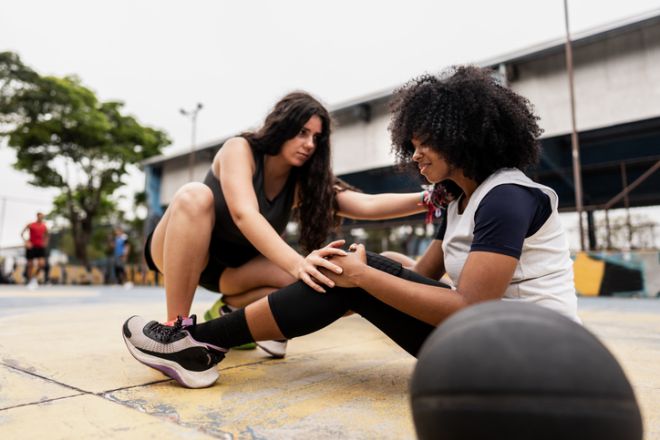4 Common ER Injuries And How To Avoid Them
The 4 Activities That Land People In The ER Most—And How To Avoid Them
Share the post
Share this link via
Or copy link

Even everyday activities can lead to painful (and preventable) injuries that may land you in the emergency room. Whether you’re an athlete or just unloading the dishwasher, here are four of the most common ways people get hurt, and smart tips to stay safe.
1. Playing sports

A wrong step on the court, trail, or even a driveway can stretch or tear the ligaments supporting your ankle. These injuries are especially common in sports like basketball, pickleball, soccer, skiing, and trail running, according to Stony Brook Medicine. The most common types of sprains are inversion sprains, frequently caused by the foot rolling inward and straining the outer ligaments, along with eversion sprains, which occur when the foot rolls outward, damaging inner ligaments.
Ending up with a bad ankle sprain can not only be painful, but costly too. According to Mira, the average cost of an emergency room visit can range anywhere from $150 to over $2,000, depending on the type of injury and whether you have insurance.
Love MadameNoire? Get more! Join the MadameNoire Newsletter
We care about your data. See our privacy policy.
In order to prevent sprains from occurring, make sure you warm up and stretch before playing sports, and wear proper footwear with ankle support to strengthen your ankle and leg muscles.
RELATED CONTENT: Don’t Slip Sis! There’s A Good Chance You’re Walking On Icy Sidewalks Wrong
2. Running

Your knees endure a lot of stress during high-impact activities like running or sprinting. Over time, this can lead to injuries such as fractures from falls or sudden impacts, and even dislocations if the kneecap or joint shifts out of place, Stony Brook Medicine notes.
If you’re a regular runner, it’s crucial to warm up properly with exercises that target the knee and surrounding muscles. Strength training, supportive braces, and avoiding overtraining can all help reduce your risk. And above all, maintaining proper form is key to protecting your joints.
3. Falls on stairs or uneven surfaces

You don’t have to be rock climbing to end up in the ER. Many serious injuries happen during everyday routines, rushing down stairs, tripping on a cracked sidewalk, or missing a step while distracted. This is because you’re often on autopilot, moving fast and not paying full attention, according to SELF.
All of these daily tasks can lead to broken bones or unnecessary sprains. To prevent falls, make sure you slow down and pay attention to your surroundings. If your house is cluttered, it may be time to do some cleaning, especially if you have items crowding the stairways. Keep them clear and well-lit.
Wear shoes with good grip, especially on slick or uneven ground. This will keep you balanced and will help minimize the risk of falls.
4. Kitchen cuts and knife injuries

One slip while slicing, and suddenly dinner prep turns into an ER visit. Common mishaps like “avocado hand” and “bagel hand” happen when people cut toward their palms while holding soft-but-tricky foods. To prevent this, always cut on a stable, non-slip surface and use tools like bagel slicers or spoon out avocado pits—never stab them with a knife.
Jeff Baker, an emergency medicine physician, warned that you should never use complicated slicer-machines like a mandoline to cut fruits or vegetables.
“They can create beautiful uniform slices, but it’s very difficult to keep your fingers away from the slicing platform,” Dr. Baker explained to SELF in an interview published Aug. 5. If you do choose to use it, be careful and consider wearing cut-resistant gloves for extra protection.
Most of these injuries aren’t caused by extreme sports; they happen when we rush, get distracted, or skip safety steps. A little awareness and prevention can save you weeks of pain and some steep medical bills from the emergency room, too.
RELATED CONTENT: Overdoing It At the Gym? 4 Signs You’re Training Too Hard
-

My Husband And I Attempted To Have A Creative Date Night At Home -Without A Babysitter - Here's How It Went
-

Vontélle Eyewear Founders Score History-Making Licensing Deal With Paramount
-

She Tried It: Ivy Park Drip 2 and 2.2 Black Pack
-

Our Health, Our Power: Debunking Myths And Taking Charge This Open Enrollment



